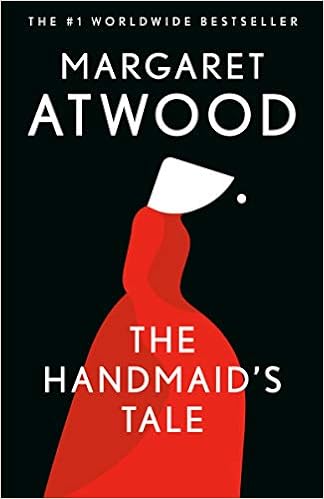Before reading The Testaments,
the sequel to The Handmaid’s Tale
which has just been released, I decided to re-read the latter first. I’ve watched the first two seasons of the
television series adaptation and wanted to get back to the book, back to the
original. I first read The Handmaid’s Tale over 30 years ago,
shortly after it was published, so my memory certainly needs refreshing.
Rather than write a typical book review of The Handmaid’s Tale, I thought I’d focus on the differences between
the book and the first season of the television version. (Subsequent seasons are totally outside the
parameters of the book.)
In the book, the narrator is Offred.
We are never told her real name.
In the tv show, the protagonist is named June, a name mentioned only
once in the novel (14). The two Offreds
are different too. The book’s Offred is
quite passive; survival seems to be her priority. Even as a young woman, she didn’t take part
in protests before she became a handmaid:
“I didn’t go on any of the marches’ (189). In the book, it is Offred’s mother who is the
activist. When approached by Ofglen to
become a spy for the Mayday resistance, Offred declines. June in the television version is much more
active and rebellious. She and her friend
Moira took part in protest marches; in the third episode, the two women run and
hide in a cafe when law enforcement officials open fire on the crowd. June also collects a secret package of
letters for Mayday. In the book, Offred
does not take part in the Salvaging, whereas in the tv version, she is among
the first to participate.
Fred and Serena Joy Waterford are developed more in the television
series. The book doesn’t even
conclusively identify a surname. Both
are younger on the screen; in the book, for instance, Serena uses a cane. Through flashbacks we see the relationship
between husband and wife when they first met.
The show also emphasizes the pivotal role Serena played in the creation of
Gilead.
Other characters are also given more prominence in the adaptation. In the book, Nick remains a much more
mysterious character because we have access only to Offred’s thoughts. In the television show, flashback scenes
offer some insight into his life pre-Gilead and his motivations are
clearer. Two other handmaids are given
substantial stories in the adaptation that are not mentioned in the book. Ofglen has a role in the resistance, but we
don't know many details about her. In
the tv show, she is given a backstory and we witness her genital
mutilation. Janine is another handmaid
whose story differs though she is psychologically frail in both; in the
television version, she is a much more sympathetic character. In the latter, she is punished with blindness
in one eye (not maiming of the feet) and then gives birth to a girl who dies. In the television version, she gives birth to
a healthy baby girl. After being separated
from Angela, Janine suffers a psychological breakdown, kidnaps Angela, and
threatens to jump off a bridge with the baby in her arms. The show also adds a particicution involving
Janine which never appears in the book. Aunt
Lydia is a much more prominent character on the show; in the book, she is
mentioned only in flashbacks. When
Offred sees her at the salvaging, she comments, “It’s Aunt Lydia. How many years since I’ve seen her? I’d begun to think she existed only in my
head” (286).
What happens to some characters is explained more in the
adaptation. For example, the book
suggests that Luke is dead, but the television series shows Luke living in
Canada. The latter also offers more of
the backstory of Luke and June’s relationship.
In the novel, Moira just disappears; Offred sees her at Jezebel’s and
then, “I don’t know how she ended, or even if she did, because I never saw her
again” (262). In the adaptation, Moira
manages to escape to Canada where she reunites with Luke. In the book, Offred is shown a photo of her
daughter (who is never named); in the tv version, June actually sees Hannah. Most significantly, Offred’s pregnancy is not
confirmed in the book. She tells Nick
that she is but she admits, “This I know is wishful thinking” (283). In the series finale, Serena gives June a
pregnancy test which proves to be positive.
There are other minor differences too.
Cora, the maid in the Commander’s house, is supportive of Offred but
there is no such character in the adaptation.
Offred’s mother was a major influence on her daughter, but she is just a
shadow in the tv version. In the book,
Offred’s daughter is abducted in a grocery store, not a maternity ward as in
the adaptation. Handmaids no longer have
an identifying tattoo; in the updated tv series, they have a tracker attached
to an ear. In the book, people of colour
have been resettled elsewhere; in the other, there are a number of characters
of colour: Luke and Moira are black and
Hannah is biracial. A major addition to
the adaptation is the Mexican trade delegation which is the means of bringing
June information about her husband.
Now that I’ve separated the television show from the novel, I’m ready
to read The Testaments.

No comments:
Post a Comment